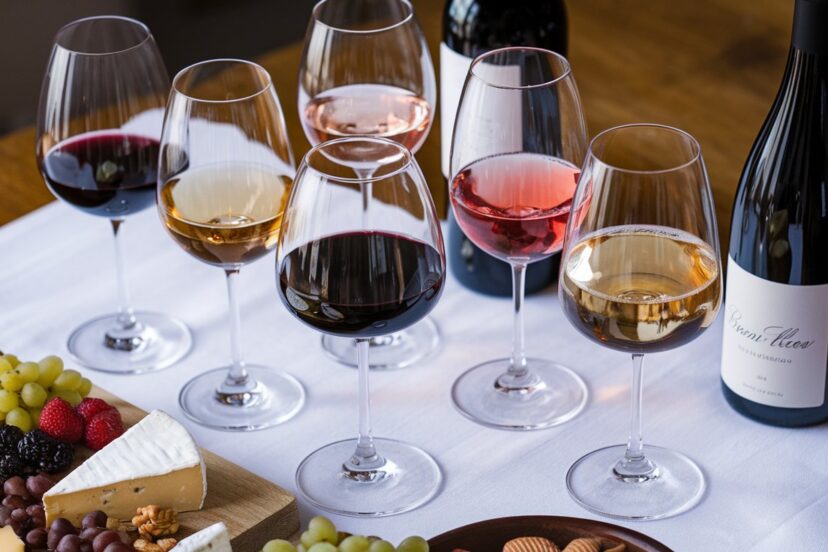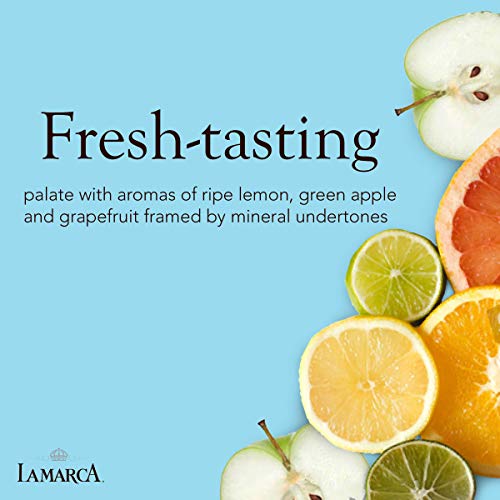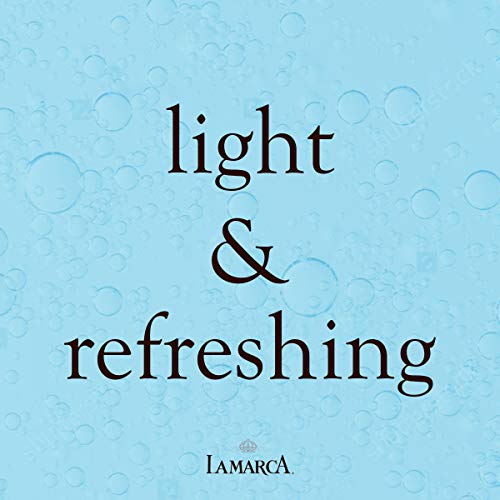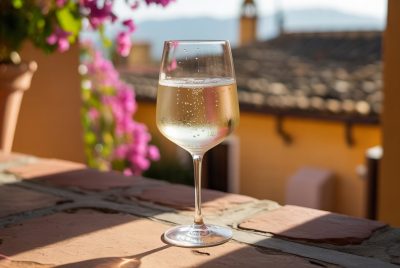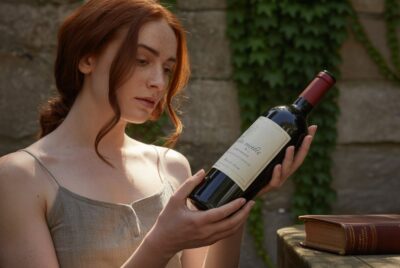Best Wine for Beginners
Post Disclaimer
*We may earn a commission for purchases made using our links. Please see our disclosure to learn more.
Walking into a wine shop used to fill me with dread. The overwhelming selection, confusing labels, and fear of choosing something terrible made what should be enjoyable feel like a test I wasn’t prepared for. If you’ve felt this way, you’re in good company. The wine world can seem designed to intimidate, but it doesn’t have to be that way.
I’ve spent years sampling wines across the spectrum, from budget bottles to special occasion splurges, and I’ve found that the best wine for beginners is one that is approachable, easy to enjoy, and helps build confidence in your own taste. This guide shares affordable, crowd-pleasing wines that consistently delight new wine drinkers, along with simple tips to make the selection process less overwhelming.
Key Takeaways:
- Start with sweeter, lighter wines before progressing to drier, more complex options
- White wines like Riesling and Moscato are excellent entry points for beginners
- For red wines, begin with Pinot Noir or Merlot which are typically smoother and less tannic
- Don’t spend too much – great beginner wines can be found between $10-20
- Tasting notes are subjective – trust your own preferences over others’ opinions
- Food pairings enhance enjoyment but aren’t essential for beginners
- Wine glasses matter but specialized shapes aren’t necessary when starting out
Recommended Beginner-Friendly Wines
1. Chateau Ste. Michelle Columbia Valley Riesling
Experience the crisp and refreshing taste of Chateau Ste. Michelle Columbia Valley Riesling. This well-balanced white wine offers vibrant flavors of peach, tangy apple, mango, and lemon-lime, with a touch of minerality. Crafted from premium Washington State grapes, it pairs beautifully with poultry, seafood, and spicy cuisine. Whether for casual sipping or special occasions, this award-winning Riesling delivers a delightful, fruit-forward experience.
- Flavor: Bright and refreshing fruit flavors
- Food Pairing: Versatile pairing with seafood and spicy dishes
- Recognition: Awarded 90 points by Wine Enthusiast
- Vintage Variation: Vintage may vary
- Sweetness Level: Medium dryness may not suit very sweet wine lovers
- Availability: Not available in all regions
This Washington State Riesling delivers a crisp and refreshing experience with lively notes of peach, tangy apple, mango, and lemon-lime, balanced by delicate mineral undertones. Its moderate body and medium dryness create a well-rounded flavor profile, making it an excellent choice for casual sipping or pairing with meals. Served well-chilled, it enhances its bright fruitiness, making every sip refreshing and enjoyable.
Why it’s great for beginners: The approachable balance of fruitiness and acidity makes it easy to enjoy, while its slight sweetness adds an inviting touch without being overwhelming. This versatile wine pairs wonderfully with grilled seafood, poultry, or spicy dishes, making it a great introduction to white wines.
Price: Around $11–$12
2. Josh Cellars Cabernet Sauvignon
Josh Cellars Cabernet Sauvignon is a full-bodied, smooth California red wine with rich flavors of blackberry, toasted hazelnut, and cinnamon, complemented by aromas of dark fruits, clove, and subtle oak. This well-balanced Cabernet delivers a velvety texture with just the right amount of depth and structure. Perfect for pairing with grilled meats, hearty dishes, or decadent chocolate desserts, it’s a versatile choice for any occasion.
- Rich Flavor: Bold notes of blackberry, hazelnut, and spice
- Versatile Pairing: Complements steak, barbecue, and chocolate desserts
- Smooth Finish: Well-balanced with soft tannins
- Vintage Variation: Flavor may change slightly each year
- Tannin Strength: Moderate tannins might be intense for some
- Availability: Not always stocked in all stores
This bold yet approachable Cabernet Sauvignon is packed with rich flavors of blackberry, toasted hazelnut, and cinnamon, balanced by aromas of dark fruits, clove, and subtle oak. Its full-bodied structure offers depth and complexity, yet remains smooth and easy to drink. With a velvety texture and just the right amount of spice, it’s no surprise that this Cabernet has become a favorite among wine lovers. Consistently well-crafted across vintages, it delivers quality and reliability in every bottle.
Why it’s great for beginners: While it has the boldness of a classic Cabernet, its smooth tannins and fruit-forward profile make it an excellent introduction to red wine. The hints of spice and oak add complexity without overwhelming the palate, making it a great choice for those looking to explore deeper flavors in wine.
Price: Around $14–$15
3. La Marca Prosecco
This Italian Prosecco is light, crisp, and refreshing, offering lively bubbles with bright flavors of green apple, sweet citrus, and tropical fruit. With its delicate balance of fruitiness and acidity, La Marca Prosecco is perfect for any occasion—whether you’re sipping it on its own, pairing it with a meal, or using it in a mimosa or sparkling cocktail. The convenient twist-and-pop cork makes it easy to enjoy without a wine opener, making it a go-to for celebrations and casual gatherings alike.
- Refreshing Taste: Crisp and fruity with green apple and citrus notes
- Versatile Use: Enjoy solo, with meals, or in cocktails like mimosas
- Convenient Opening: Twist-and-pop cork for easy access
- Sweetness Level: Slightly sweet, which may not appeal to those who prefer dry wines
- Carbonation Fade: Bubbles may dissipate if not consumed quickly
- Vintage Variation: Flavor can change slightly year to year
This popular Italian Prosecco delivers a lively and refreshing experience with delightful bubbles and bright flavors of green apple, peach, and citrus. With its crisp acidity and slight touch of sweetness, it strikes the perfect balance between vibrant fruitiness and a smooth, refreshing finish. Whether you’re toasting a special occasion, enjoying a casual brunch, or mixing up a classic mimosa, La Marca Prosecco is a versatile and approachable sparkling wine that brings a little sparkle to any moment. The convenient twist-and-pop cork makes opening a breeze, so you can celebrate without hassle.
Why it’s great for beginners: The gentle bubbles and hint of sweetness make this an easy-to-love introduction to sparkling wine. It’s lighter and less intense than Champagne, making it more approachable for new wine drinkers, while still offering the elegance of a high-quality Prosecco. Plus, it’s a fantastic value, bringing Italian sparkle to your glass without breaking the bank.
Price: Around $15–$16
4. Apothic Red Blend
This bold and intriguing California red blend combines four varietals—Zinfandel, Merlot, Syrah, and Cabernet Sauvignon—to create a smooth, rich, and slightly sweet wine. It features lush flavors of dark cherry, vanilla, and mocha, with a velvety texture and a hint of spice on the finish. Perfect for those who enjoy full-bodied, fruit-forward wines with a touch of sweetness, Apothic Red is a versatile choice for casual sipping, pairing with meals, or enjoying with chocolate desserts.
- Rich Flavor: Dark cherry, vanilla, and mocha with a smooth, velvety finish
- Beginner-Friendly: Slightly sweet and easy to drink, even for new red wine drinkers
- Great Value: Affordable price for a bold and flavorful wine
- Sweetness Level: Slightly sweet, which may not appeal to those who prefer dry reds
- Not Very Complex: Lacks the depth of higher-end red blends
- Artificial Notes: Some drinkers may find the vanilla and mocha flavors too pronounced
A bold and fruit-forward blend, Apothic Red is crafted from Zinfandel, Syrah, Merlot, and Cabernet Sauvignon, creating a rich and velvety wine that has become a favorite among beginners. It delivers lush flavors of ripe dark berries, mocha, and vanilla, with a touch of spice and a silky-smooth finish. Slightly on the sweeter side for a red, this blend is perfect for those easing into bolder wines without overwhelming the palate.
Why it’s great for beginners: The smooth texture and hint of sweetness make this a gentle introduction to red wine. It’s consistently well-balanced year after year, widely available, and pairs effortlessly with everything from chocolate desserts to grilled meats.
Price: Around $10
Understanding Wine Basics: A Beginner’s Primer
When I first started exploring wine, I wish someone had given me a straightforward explanation of the fundamentals without the pretension. If you’re searching for the best wine for beginners, let me share what I’ve learned in plain language to make your journey enjoyable and stress-free.
Wine Types Simplified
- White wines are typically made from green grapes where the skins are removed before fermentation. This generally results in lighter, crisper wines with fruit-forward flavors like apple, pear, citrus, or tropical fruits. Whites are usually served chilled and can range from bone-dry to very sweet.
- Red wines are made from red or black grapes where the skins remain during fermentation. This process creates those deep colors and introduces tannins – that slightly bitter, drying sensation you might feel after sipping. Reds typically feature darker fruit flavors along with earthy or spicy notes. They’re usually served slightly cooler than room temperature.
- Rosé wines offer a middle ground, made from red grapes but with limited skin contact. This creates that beautiful pink color while keeping the wine lighter and more refreshing than most reds.
- Sparkling wines like Prosecco, Cava, or Champagne undergo a second fermentation process that creates those delightful bubbles. They range from very dry (Brut) to sweet (Demi-Sec).
Sweetness Levels
Many beginners prefer wines with a touch of sweetness. There’s absolutely nothing wrong with this! Here’s a simple scale:
- Dry – Contains very little residual sugar; might taste “not sweet” or even slightly bitter to beginners
- Off-dry – Has a hint of sweetness that balances acidity
- Medium-sweet – Noticeably sweet but not overpowering
- Sweet – Prominently sweet, like dessert wines
The Taste Progression for Beginners
I’ve found that many people follow a similar journey when exploring wines:
- Sweet whites like Moscato or sweeter Riesling
- Off-dry whites like some Pinot Grigios or Sauvignon Blancs
- Light-bodied, fruity reds like Pinot Noir
- Medium-bodied reds like Merlot or red blends
- Full-bodied, more tannic reds like Cabernet Sauvignon or Malbec
This isn’t a rule, just a pattern I’ve observed. Feel free to explore in any order that appeals to you!
Best White Wines for Beginners
Riesling
Riesling offers incredible versatility, ranging from sweet to bone-dry. For beginners, I recommend starting with a slightly sweeter German Riesling or Washington State options. The combination of natural sweetness, crisp acidity, and lower alcohol content makes these especially approachable.
Moscato
Distinctly sweet and aromatic with notes of peach, orange blossom, and nectarine, Moscato is like the dessert of wines. The Italian Moscato d’Asti even has a light fizz that makes it especially fun. It’s a great starting point if you enjoy sweeter drinks.
Pinot Grigio
Light, crisp and easy-drinking, Pinot Grigio typically offers subtle flavors of pear, apple, and sometimes a hint of mineral character. It’s refreshing and uncomplicated – perfect for hot summer days or pairing with lighter meals.
Sauvignon Blanc
With its bright acidity and distinctive notes of citrus, gooseberry, and sometimes bell pepper or grass (especially from New Zealand), Sauvignon Blanc is slightly more complex but still very approachable. I love introducing friends to this variety when they’re ready to explore something a little drier.
Best Red Wines for Beginners
Pinot Noir
Often described as the “gateway red,” Pinot Noir is lighter-bodied with lower tannins and bright red fruit flavors like cherry and raspberry. Oregon and California produce excellent examples that aren’t too expensive. It’s sophisticated enough to impress but won’t overwhelm your palate.
Red Blends
Many popular red blends are specifically crafted to be crowd-pleasers, offering smooth textures and often a hint of sweetness. Brands like Apothic, Menage à Trois, and 19 Crimes have mastered the art of creating accessible red blends that appeal to newer wine drinkers.
Merlot
Before the movie “Sideways” unfairly maligned it, Merlot was America’s favorite red wine – and for good reason. It offers soft tannins, plush texture, and approachable plum and black cherry flavors. It’s the comfort food of red wines.
Zinfandel
American Zinfandel offers bold, jammy fruit flavors with a hint of spice and moderate tannins. If you enjoy boldness but don’t want the astringency of some other reds, Zinfandel is worth exploring.
How to Start Your Wine Journey
Begin With What Sounds Good to You
Despite everything I’ve recommended, the best wine for beginners is simply whatever sounds most appealing to you. If a description of chocolate and berry notes in a Malbec catches your attention, try it! Your personal preferences are more important than any “rules.”
Take Notes (But Keep Them Simple)
I found that keeping track of what I liked and disliked helped immensely. You don’t need elaborate tasting notes – just rate wines on a scale of 1-5 and jot down one or two things you noticed. “Very sour, not for me” or “Smooth, liked the cherry taste” is perfectly sufficient.
Explore Gradually
Try different varieties within your comfort zone before branching out. If you enjoy a sweet Riesling, you might next try an off-dry Riesling or perhaps a Chenin Blanc. Small steps lead to big discoveries.
Attend Casual Tastings
Many wine shops offer free or inexpensive tastings on weekends. These are perfect low-pressure environments to try several wines without committing to a full bottle. I learned so much from these events, and the staff are usually passionate about helping beginners.
Don’t Be Intimidated
The wine world has an unfortunate reputation for snobbery, but most true wine lovers are excited to share their passion with newcomers. If someone makes you feel inferior about your wine knowledge or preferences, that’s a reflection of them, not you.
Storing and Serving Basics
Temperature Matters
Even as a beginner, serving wine at the right temperature makes a huge difference:
- White wines: Refrigerate for at least 2 hours before serving (45-55°F)
- Red wines: Slightly cooler than room temperature (55-65°F) – 15 minutes in the refrigerator before opening can help
- Sparkling wines: Well-chilled, like white wines
You Don’t Need Fancy Equipment
While proper wine glasses do enhance the experience, you don’t need a different glass for every variety when starting out. A standard white wine glass and a standard red wine glass will serve you well. The main difference is that red wine glasses have a larger bowl to allow more oxygen contact.
Simple Storage Rules
If you plan to drink a bottle within a few weeks, simply store it away from direct sunlight and heat sources, ideally laying it on its side if it has a cork. No need for a dedicated wine refrigerator or cellar when you’re just beginning.
Conclusion
Wine exploration should be a journey of discovery, not a test with right and wrong answers. The best wine for beginners is simply the one you enjoy the most, regardless of price or prestige. Start with these approachable recommendations, keep an open mind, and remember that developing your palate takes time.
I hope this guide helps you find a few wines that bring you joy. The wine world is vast and diverse – there truly is something for everyone. Don’t let anyone dictate what you “should” like. Trust your own taste buds, ask questions without fear, and most importantly, have fun along the way.
Cheers to the beginning of your wine adventure!
Frequently Asked Questions
Is expensive wine actually better than cheap wine?
Not necessarily! Many factors influence wine pricing including region, marketing, and scarcity. For beginners, the sweet spot is typically in the $10-20 range, where you can find excellent quality without paying for prestige. I’ve had $15 bottles I enjoyed far more than $50 ones.
How can I avoid getting a headache from wine?
Wine headaches can result from several factors: alcohol dehydration, histamines, sulfites, or tannins. Stay hydrated by drinking water alongside your wine, start with lower alcohol varieties (under 13%), and consider taking an antihistamine if you suspect sensitivity. Some people find that certain wine styles trigger headaches less than others – keeping a simple journal can help identify your personal triggers.
How long does wine last after opening?
Generally, whites and rosés last 3-5 days in the refrigerator with a wine stopper or recorked. Most reds will stay good for 3-4 days. Sparkling wines lose their bubbles quickly, so try to consume within 1-2 days. If you don’t finish a bottle, you can freeze leftover wine in ice cube trays for future cooking use!
What’s the difference between “dry” and “sweet” wines?
In wine terminology, “dry” specifically means the absence of residual sugar left after fermentation – not the drying sensation you might feel in your mouth (that’s from tannins). Many beginners mistake the fruit flavors in wine for sweetness, but a wine can taste like ripe fruit while being technically dry. If you’re unsure about your preference, start with off-dry wines and move in either direction.
How do I know if a wine has gone bad?
Trust your senses! A wine has likely spoiled if it smells like vinegar, wet cardboard, or nail polish remover. For whites, browning color is a warning sign, while reds might take on a brownish-orange tinge at the edges. The flavor will be noticeably off – flat, sour, or just unpleasant. When in doubt, the sniff test rarely lies.

